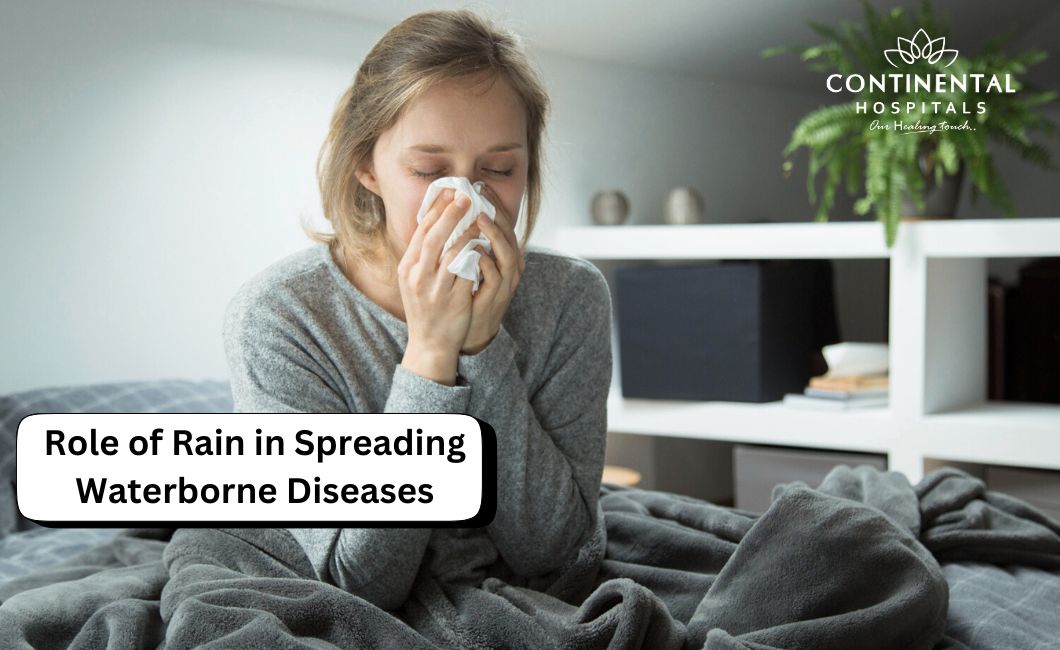Rain is often celebrated for its ability to replenish water sources, nourish crops, and sustain life. However, amidst its benefits, rain also plays a significant role in spreading waterborne diseases. Understanding this dual nature of rain is crucial for implementing effective strategies to mitigate the risks associated with waterborne illnesses. In this article, we'll delve into the intricate relationship between rain and the spread of waterborne diseases, highlighting its importance and proposing preventive measures.
The Connection Between Rain and Waterborne Diseases
Understanding Waterborne Diseases
Waterborne diseases are illnesses caused by pathogenic microorganisms that are transmitted through contaminated water. These diseases pose a significant public health concern worldwide, particularly in areas with poor sanitation and inadequate access to clean water. Common waterborne pathogens include bacteria, viruses, and parasites such as cholera, typhoid fever, hepatitis A, and cryptosporidiosis.
Rainwater Contamination
Rainwater, while seemingly pure, can become contaminated as it interacts with various environmental factors. When rain falls, it can collect pollutants from the atmosphere, rooftops, and other surfaces before flowing into water bodies such as rivers, lakes, and groundwater reservoirs. This contamination introduces pathogens into water sources, increasing the risk of waterborne diseases.
Transportation of Pathogens
One of the primary ways rain contributes to the spread of waterborne diseases is by transporting pathogens from their sources of origin to new locations. Heavy rainfall can cause runoff, carrying contaminants from urban areas, agricultural fields, and sewage systems into freshwater systems. Once introduced into water bodies, these pathogens can proliferate and infect individuals downstream, leading to outbreaks of waterborne illnesses.
Flooding and Water Contamination
Flooding, a common consequence of heavy rainfall, exacerbates the spread of waterborne diseases by submerging infrastructure and causing sewage systems to overflow. This inundation results in the mixing of sewage with freshwater sources, contaminating them with a potent cocktail of pathogens. Communities affected by flooding are at heightened risk of contracting waterborne diseases due to the widespread contamination of their drinking water and sanitation systems.
Impact on Vulnerable Populations
The relationship between rain and the spread of waterborne diseases disproportionately affects vulnerable populations, including children, the elderly, and individuals with compromised immune systems. In regions lacking access to clean water and adequate sanitation facilities, the consequences of waterborne illnesses can be devastating, leading to increased morbidity and mortality rates.
Preventive Measures and Mitigation Strategies
Improving Water Quality
Enhancing water quality is essential for reducing the risk of waterborne diseases associated with rainwater contamination. This can be achieved through measures such as investing in water treatment infrastructure, implementing pollution control measures, and promoting watershed management practices to prevent runoff and sedimentation.
Ensuring Access to Safe Drinking Water
Access to safe drinking water is fundamental to preventing waterborne diseases. Governments, NGOs, and international organizations must prioritize efforts to provide communities with reliable access to clean water sources, especially in regions prone to waterborne illness outbreaks.
Promoting Hygiene and Sanitation
Promoting good hygiene practices, such as handwashing with soap and safe food handling, is critical for preventing the transmission of waterborne diseases. Additionally, improving sanitation infrastructure, including the construction of latrines and sewage treatment plants, can help mitigate the contamination of water sources during heavy rainfall and flooding events.
Early Warning Systems and Response Plans
Implementing early warning systems for waterborne disease outbreaks can facilitate timely interventions and reduce the spread of illnesses. By monitoring rainfall patterns, water quality indicators, and disease surveillance data, authorities can identify at-risk areas and implement targeted response measures, such as vaccination campaigns and health education initiatives.
Community Engagement and Empowerment
Engaging communities in water management and disease prevention efforts is essential for building resilience to waterborne diseases. Empowering local stakeholders through education, training, and participatory decision-making processes fosters ownership of preventive measures and ensures their sustainable implementation.
Conclusion
Rain plays a dual role in both sustaining life and spreading waterborne diseases. While it is a vital source of freshwater, its interaction with the environment can lead to contamination and the proliferation of pathogens in water sources. Understanding the connection between rain and waterborne diseases is crucial for implementing effective preventive measures and mitigating the risks posed by contaminated water. By investing in water quality improvements, promoting hygiene and sanitation practices, and fostering community engagement, we can work towards ensuring access to safe and clean water for all, even in the face of rainfall-related challenges.
Related Blog Articles:
.webp)














